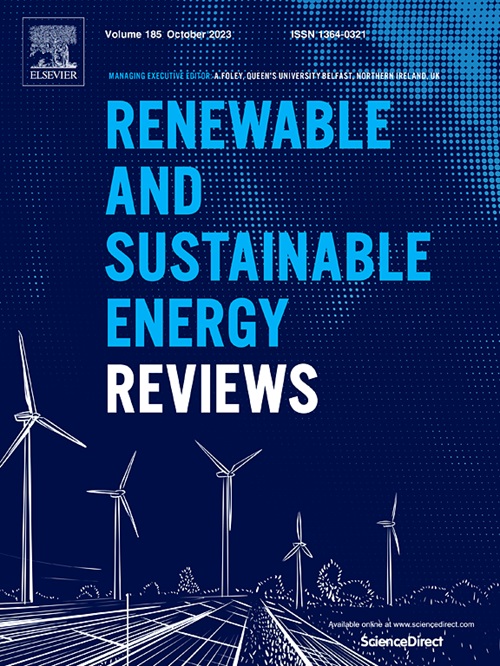碳基材料对镁基材料水解性能的促进作用
IF 16.3
1区 工程技术
Q1 ENERGY & FUELS
引用次数: 0
摘要
不断升级的能源挑战及其对环境的不利影响促使研究人员探索可再生和可持续的能源,以取代传统的化石燃料。由于高能量密度载体和环境友好性,水解或水裂解已被认为是比化石燃料更有效的方法。许多水解材料已被探索,但仍面临着氢动力学缓慢、表面钝化层形成和产率低等挑战。由于金属水解具有多种特性,如安全储存和可持续地有效供应氢,因此对氢的生产进行了深入的研究。人们提出了多种方法来提高效率,包括合金化、改变水溶液、材料结构和复合材料的形成,但迫切需要创造价格合理且环境友好的材料,这是目前所缺乏的。本文综述了近年来碳质材料在制氢方面的研究成果,特别是它们作为镁基材料水解催化剂的潜力。碳基材料具有丰度高、成本效益好、化学稳定性好、带结构吸引人、制备方法简单等优点,是金属水解的理想催化剂。石墨烯、氧化石墨烯、碳纳米管、碳化物和碳基复合材料作为镁基材料水解的催化剂。这项研究的目的是激发读者研究使用碳基材料的环境友好型氢生产。本文章由计算机程序翻译,如有差异,请以英文原文为准。
Role of carbon-based materials to promote the hydrolysis performance of magnesium-based materials
The escalating energy challenges and their adverse environmental repercussions have stimulated researchers to explore renewable and sustainable energy sources instead of conventional fossil fuels. Hydrolysis or water splitting has been recognized as efficient comparative to fossil fuels because of the high energy density carrier and environmentally friendly nature. Many hydrolytic materials have been explored but still facing challenges such as sluggish hydrogen kinetics, formation of surface passivation layers and low yield. Hydrolysis of metals has been thoroughly investigated for the production of hydrogen due to its versatile properties, like safe storage and effective supply of hydrogen in a sustainable manner. A variety of methods have been proposed to improve the efficiency, including alloying, changing aqueous solutions, structure of material, and composite formation, however, there is a pressing need to create affordable and environment-friendly materials which is lacking. The current review provides a comprehensive evaluation of recent research contributions of carbonaceous materials for hydrogen generation, particularly their potential as a catalyst for Mg-based materials hydrolysis. Carbon-based materials have abundance, cost-effectiveness, chemical stability, attractive band structure, and easy preparation methods making them an ideal catalytic candidate for metal hydrolysis. Graphene, graphene oxide, carbon nanotubes, carbide and carbon-based composite are employed as catalysts for Mg-based materials hydrolysis. The goal of this study is to inspire readers to research the environmentally friendly production of hydrogen using carbon-based materials.
求助全文
通过发布文献求助,成功后即可免费获取论文全文。
去求助
来源期刊

Renewable and Sustainable Energy Reviews
工程技术-能源与燃料
CiteScore
31.20
自引率
5.70%
发文量
1055
审稿时长
62 days
期刊介绍:
The mission of Renewable and Sustainable Energy Reviews is to disseminate the most compelling and pertinent critical insights in renewable and sustainable energy, fostering collaboration among the research community, private sector, and policy and decision makers. The journal aims to exchange challenges, solutions, innovative concepts, and technologies, contributing to sustainable development, the transition to a low-carbon future, and the attainment of emissions targets outlined by the United Nations Framework Convention on Climate Change.
Renewable and Sustainable Energy Reviews publishes a diverse range of content, including review papers, original research, case studies, and analyses of new technologies, all featuring a substantial review component such as critique, comparison, or analysis. Introducing a distinctive paper type, Expert Insights, the journal presents commissioned mini-reviews authored by field leaders, addressing topics of significant interest. Case studies undergo consideration only if they showcase the work's applicability to other regions or contribute valuable insights to the broader field of renewable and sustainable energy. Notably, a bibliographic or literature review lacking critical analysis is deemed unsuitable for publication.
 求助内容:
求助内容: 应助结果提醒方式:
应助结果提醒方式:


